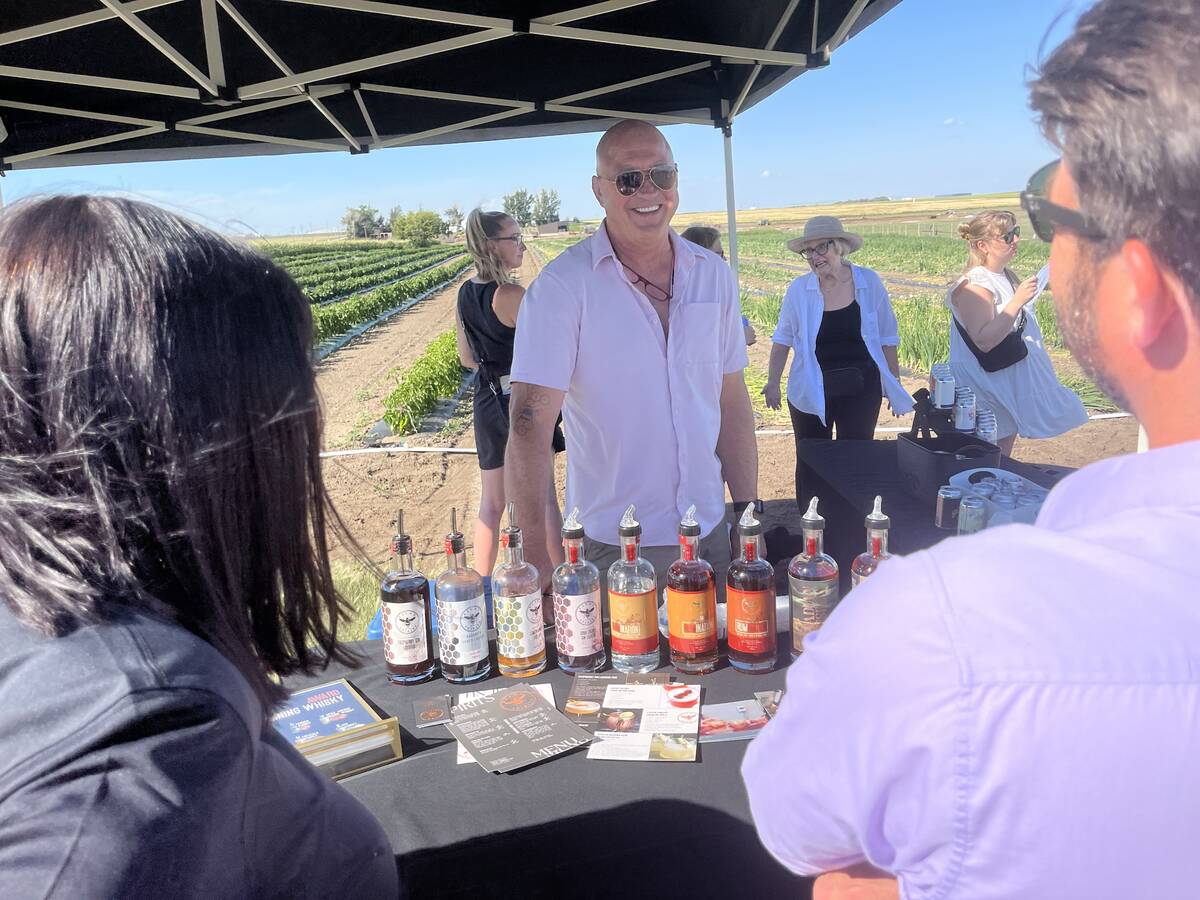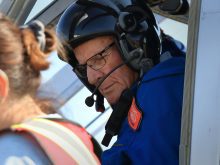LIVELONG, Sask. – Bison producers Judy and Kevin Wilkinson believe their animals are a good fit with the marginal lands of the wilderness farm they established in northwestern Sask-atchewan in 1977.
Bordered by the Thunderchild Indian reserve, Meadow Lake forest reserve and Turtle Lake, Trail’s End Farm offers a remote setting for about 150 head of Plains bison to live quietly with relatively little human management.
The couple came here from Weyburn, Sask., looking for a back-to-the land lifestyle in which they could earn a living and raise their sons Zenon and Brodie, now in their 20s and working in British Columbia and Alberta.
Read Also

From farmer to award-winning distiller
Pivot Spirits showcases transition from farmer to distiller with provincial award-winning results in Alberta for Lars Hirch
“We both like our peace and quiet,” said Kevin, noting they keep life simple by avoiding debt, enjoying a modest home they renovated themselves and keeping off-farm work close to home.
The Wilkinsons believe the bison industry will rebound shortly from poor prices and closed borders due to BSE.
They also think bison, native to the Prairies, have natural advantages and lower input costs that should be attractive to those moving into growing forages and away from the poor economics of grain.
“You can take advantage of grass and turn it into a big product,” said Kevin, who like most farmers has seen a decline in farm income in recent years. “It’s a sad state that not any commodity is doing well in agriculture,” he said.
The Wilkinsons own five quarters and lease another four, buying winter feed for the bison because much of their land is in bush.
They run a sawmill to supply lumber for home heating and carpentry projects on the farm.
Wooden outbuildings and fencing abound here, with woodworking dominating the interior and exterior of the family home where three dogs and a cat play under the kitchen table.
Buffalo are the farm’s mainstay, while vintage cars are a sideline. Nestled into sheds and long rows behind the house, there are about 250 cars, including Hudsons, Studebakers and Nashes.
Kevin sells a few for parts but also restores many to nourish a passion he has for their uniqueness, history and fine detailing.
Judy, who once served on the division school board, works in mediation and restorative justice with Saskatchewan Justice, has served as a therapeutic foster parent and looks forward to more training in alternative health care.
Their farm lifestyle and the bison allow them time to pursue these other interests.
The bison require little management, other than the delivery of baled feed in the winter and a high solid-sided handling area used mainly at weaning time. The females calve easily on their own and the herd finds its own bedding and water.
They sell the calves into Quebec, where they are fattened for fresh meat markets. They also sell meat locally off the farm and sold breeding stock into the United States before the border closed.
In addition to BSE and price declines, the family has faced drought years. They survived with help from government aid programs and through Hay West, something they described as an emotional experience.
“Our buffalo were being sustained by grass brought from across Canada,” said Judy, tearfully relating the day a trailer load of hay of many sizes, shapes and hues from different farms arrived.
The Wilkinsons weathered those storms by keeping debts to a minimum. As well, they only replaced equipment, did upgrades and added water and phone line service to the property in the good income years.
They tried to be self-sufficient, producing a large garden, raising rabbits, cattle and goats and making yogurt and bread.
“We don’t buy things unless we can afford them. Those are the choices we’ve made,” said Judy. “We keep our desires to a minimum. You need to watch what you want.”
Last year, they created a cranberry-bison jerky called Trail’s End Buffalo Stix that has allowed them an outlet for their lower-value culled animals.
The Wilkinsons say sales are good at Saskatchewan trade shows, in area schools and rinks and through the Saskatchewan Made store.
The jerky is vacuum sealed in sizes ranging from three to 250 grams and sells for $2 to $13.
While it might not be feasible to keep making jerky if breeding stock markets return, it now offers them a way to use more of the animal.
“As long as we produce a product that people like, we’ll keep doing it,” said Judy.
They created the recipe with the food processing centre in Saskatoon and by working with Diamond 7 Meats in Lloyd-minster and Drake Meats in Drake, Sask.
The jerky market is tough to get into, with the plethora of American products commonly seen lining gas bar shelves. The Wilkinsons are limited to selling within Saskatchewan because any product sold beyond the borders would need to be slaughtered and processed in federally inspected facilities.
“We’re still feeling our way as to where we want to go; we didn’t have big expectations,” said Kevin.
Judy hints at other business opportunities to sustain Trail’s End farm, including bed and breakfast or wilderness retreats. She also dreams of offering her alternative healing services one day.
Now in their 50s, Judy said their roles have become more traditional. She handles bookkeeping and household chores and Kevin manages the animals and outdoor work.
They run the farm themselves, so any time away together is limited to a day at most, something that suits Kevin just fine.
“This is my relaxation, my whole life here is my relaxation,” he said of his farm. “I go for a walk on my land. I enjoy what I have here.”














